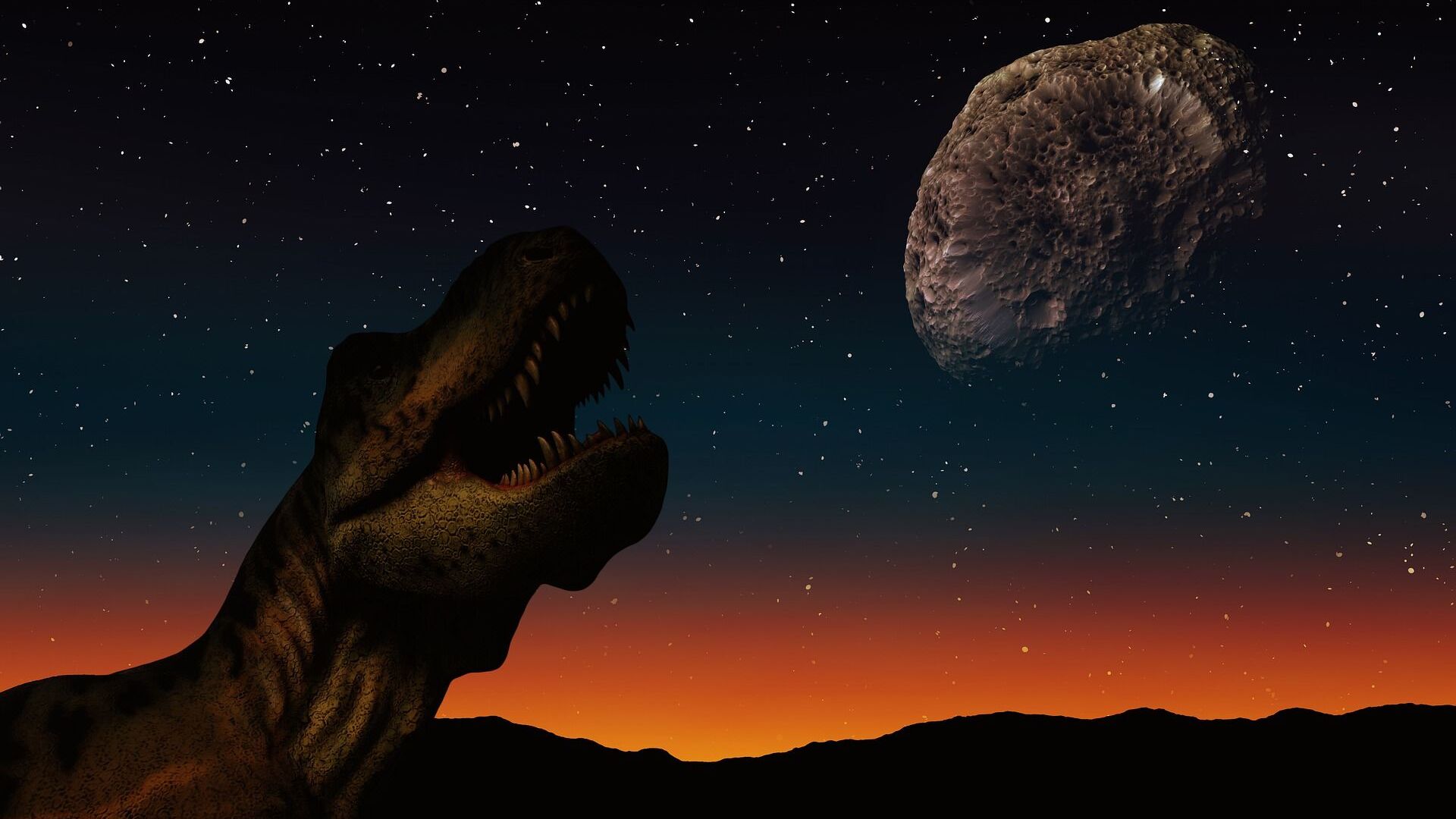https://sputnikglobe.com/20220408/incredible-fossil-find-dates-to-the-day-the-dinosaurs-died--1094575492.html
Incredible Fossil Find Dates to the Day the Dinosaurs Died
Incredible Fossil Find Dates to the Day the Dinosaurs Died
Sputnik International
Scientists believe they have discovered the fossil of a thescelosaurus that died 66 million years ago on the day that the Chicxulub crater was created by an... 08.04.2022, Sputnik International
2022-04-08T03:36+0000
2022-04-08T03:36+0000
2022-08-06T13:32+0000
archeology
sir david attenborough
dinosaur
mass extinction
science & tech
https://cdn1.img.sputnikglobe.com/img/107943/50/1079435022_0:100:1921:1180_1920x0_80_0_0_ecfb19418581111f66ab63e952825483.jpg
The fossil, discovered at the Tanis dig site in North Dakota, United States, consists of a leg, that’s been described as perfectly preserved, and even contains remnants of skin. Experts believe the find can be accurately dated to the time of the Cretaceous–Paleogene extinction event due to debris found at the site from the impact.The magnitude of the finding left Phillip Manning, a professor of natural history at the University of Manchester, dumbstruck. He said of the discovery, “It’s absolutely bonkers.”The team also discovered the remains of fish that inhaled impact debris, fossilized turtle remains that had been pierced by a wooden stake, some small mammals, skin from a triceratops, a pterosaur embryo still in its egg, and what is believed to be a fragment from the asteroid impact.The Chicxulub crater and impact of the Cretaceous–Paleogene extinction event asteroid occurred 1,864 miles (3,000km) away in the Gulf of Mexico.The convincing fossil finds, in addition to the discovery of debris that rained down directly after the asteroid strike, gave them the ability to date the site far more accurately than the standard use of carbon dating techniques.The dig is being filmed for the BBC documentary Dinosaurs: The Final Day with Sir David Attenborough.Manning said, “When Sir David looked at [the leg], he smiled and said ‘that is an impossible fossil’. And I agreed.”
Sputnik International
feedback@sputniknews.com
+74956456601
MIA „Rossiya Segodnya“
2022
Sputnik International
feedback@sputniknews.com
+74956456601
MIA „Rossiya Segodnya“
News
en_EN
Sputnik International
feedback@sputniknews.com
+74956456601
MIA „Rossiya Segodnya“
Sputnik International
feedback@sputniknews.com
+74956456601
MIA „Rossiya Segodnya“
archeology, sir david attenborough, dinosaur, mass extinction, science & tech
archeology, sir david attenborough, dinosaur, mass extinction, science & tech
Incredible Fossil Find Dates to the Day the Dinosaurs Died
03:36 GMT 08.04.2022 (Updated: 13:32 GMT 06.08.2022) Scientists believe they have discovered the fossil of a thescelosaurus that died 66 million years ago on the day that the Chicxulub crater was created by an asteroid impact. The event is widely believed to have sparked the Cretaceous–Paleogene extinction event that brought an end to the age of the dinosaurs.
The fossil, discovered at the Tanis dig site in North Dakota, United States, consists of a leg, that’s been described as perfectly preserved, and even contains remnants of skin. Experts believe the find can be accurately dated to the time of the Cretaceous–Paleogene extinction event due to debris found at the site from the impact.
The magnitude of the finding left Phillip Manning, a professor of natural history at the University of Manchester, dumbstruck. He said of the discovery, “It’s absolutely bonkers.”
Manning told BBC Radio, “The time resolution we can achieve at this site is beyond our wildest dreams … This really should not exist and it’s absolutely gobsmackingly beautiful. I never dreamt in all my career that I would get to look at something a) so time-constrained; and b) so beautiful, and also tells such a wonderful story.”
The team also discovered the remains of fish that inhaled impact debris, fossilized turtle remains that had been pierced by a wooden stake, some small mammals, skin from a triceratops, a pterosaur embryo still in its egg, and what is believed to be a fragment from the asteroid impact.
The Chicxulub crater and impact of the Cretaceous–Paleogene extinction event asteroid occurred 1,864 miles (3,000km) away in the Gulf of Mexico.
The convincing fossil finds, in addition to the discovery of debris that rained down directly after the asteroid strike, gave them the ability to date the site far more accurately than the standard use of carbon dating techniques.
“We’ve got so many details with this site that tell us what happened moment by moment, it’s almost like watching it play out in the movies. You look at the rock column, you look at the fossils there, and it brings you back to that day,” said Robert DePalma, who is leading the dig.
The dig is being filmed for the BBC documentary Dinosaurs: The Final Day with Sir David Attenborough.
Manning said, “When Sir David looked at [the leg], he smiled and said ‘that is an impossible fossil’. And I agreed.”

